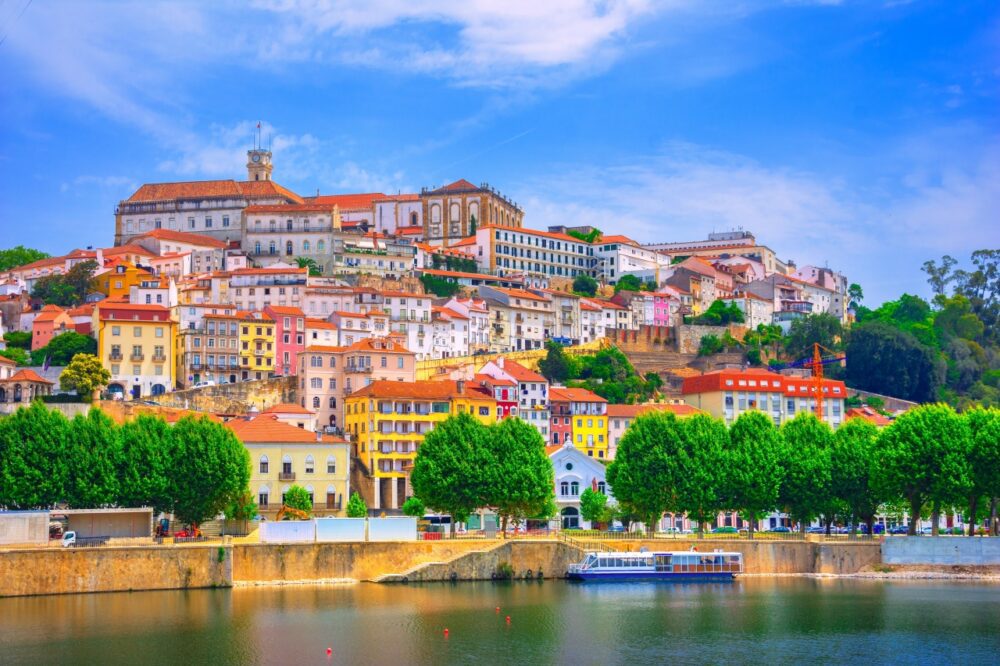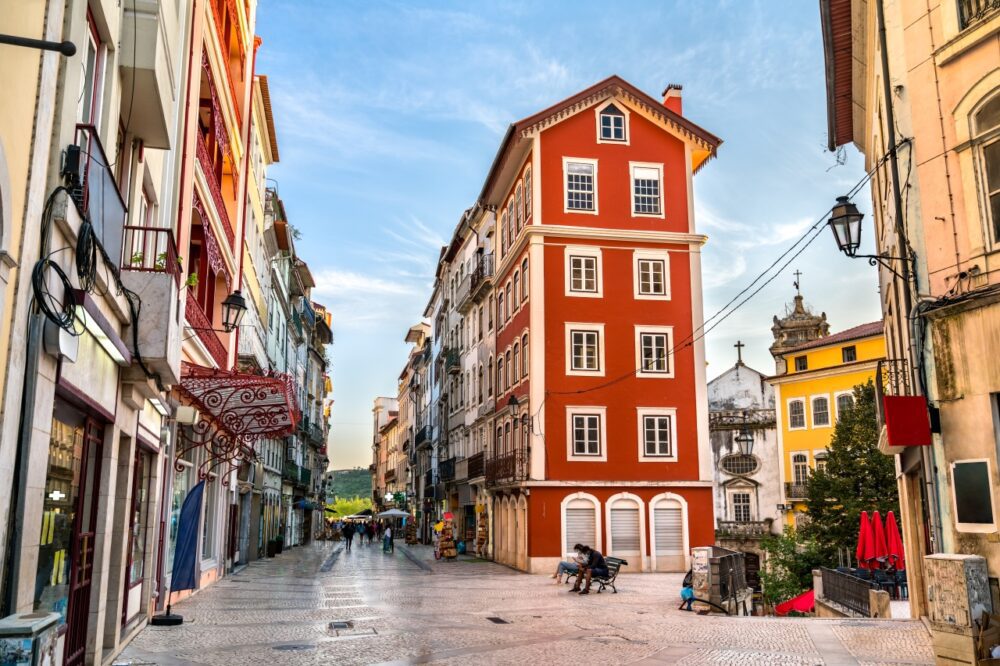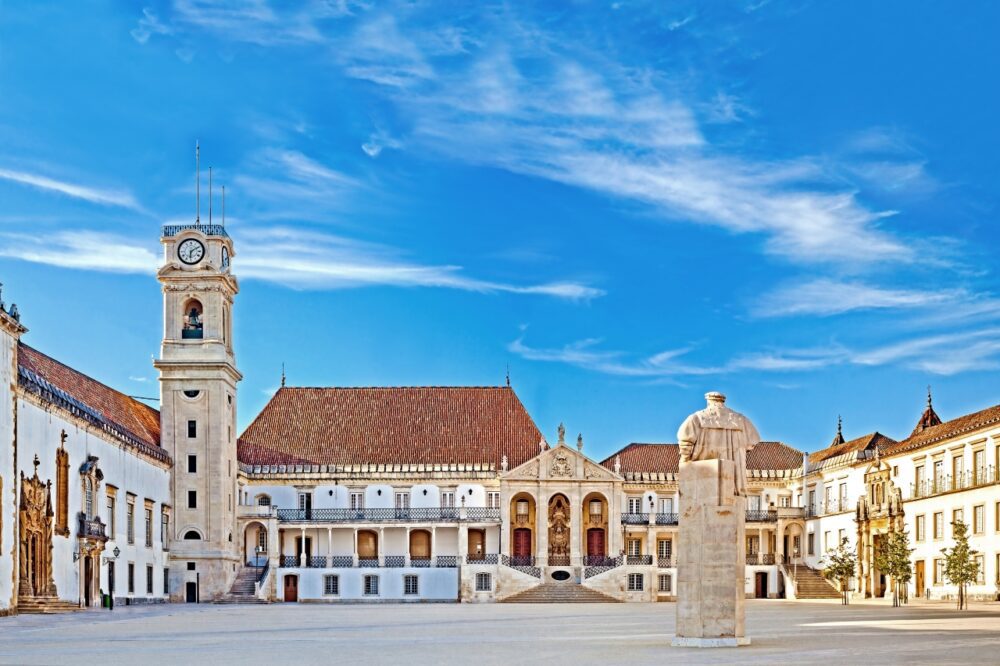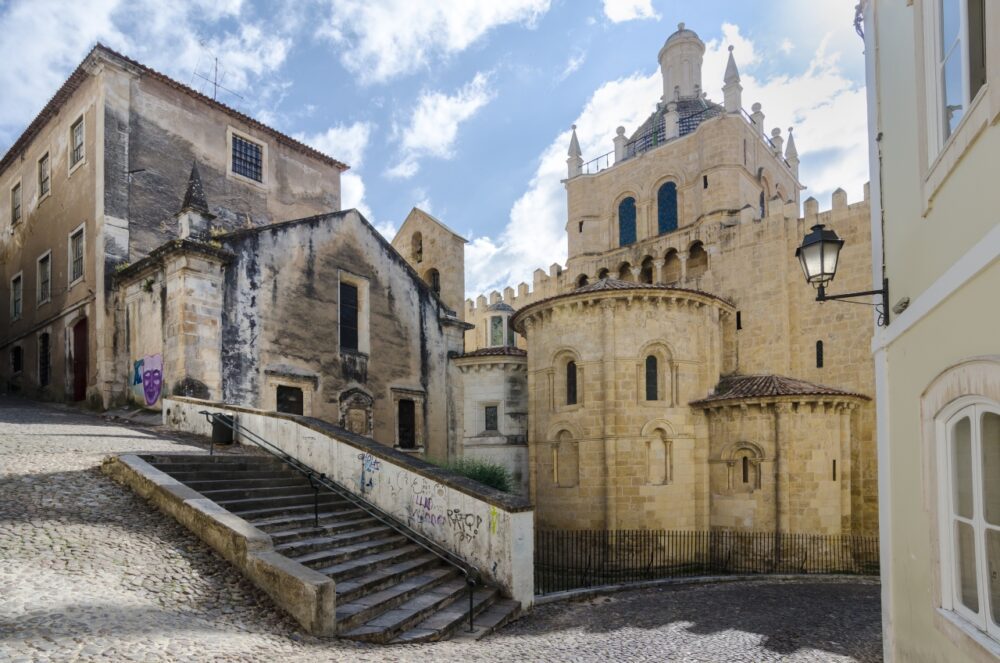
Is Coimbra worth visiting? Absolutely! The first time I visited Coimbra, I was struck by its incredible sense of history and charm. Known as the country’s former capital and home to one of Europe’s oldest universities, Coimbra offers a unique blend of academic tradition, medieval architecture, and vibrant student culture. Walking through the university grounds, admiring the stunning Joanina Library, and enjoying the hauntingly beautiful Fado music, I realised Coimbra has a soul unlike any other city in Portugal.
Located in central Portugal, Coimbra is a city that’s steeped in history and culture. Its hilltop university, a UNESCO World Heritage Site, is the beating heart of the city, but there’s so much more to explore. From the winding streets of the Old Town to the peaceful banks of the Mondego River, Coimbra is a place where past and present merge seamlessly. Whether you’re delving into its historical landmarks, exploring lush botanical gardens, or sampling traditional Portuguese cuisine, Coimbra is an inspiring and enriching destination.
But is Coimbra worth visiting for you? In this blog post, we’ll uncover the top 10 reasons why Coimbra should be on your travel list, from its historic treasures to its lively atmosphere. Plus, we’ll share travel tips to help you make the most of your time in this fascinating city. Keep reading to discover why Coimbra is one of Portugal’s most underrated gems.
Table of Contents
Pros – Reasons You Should Visit Coimbra
1. Rich History and Heritage

Coimbra is a city with a history that spans centuries, from its time as a Roman settlement to its reign as Portugal’s medieval capital.
Exploring the Coimbra Old Town, I was struck by how the city wears its history on its sleeve. Ancient walls, narrow alleyways, and churches dating back to the 12th century make it feel like stepping back in time. Highlights include the Sé Velha (Old Cathedral), an imposing Romanesque structure that has stood the test of time. Wandering these streets, I couldn’t help but marvel at the layers of history embedded in the architecture.
2. The Prestigious University

The University of Coimbra, a UNESCO World Heritage Site, is one of the oldest universities in Europe and a symbol of Portuguese intellectual history.
I joined a guided tour of the university, and the Joanina Library left me awestruck. Housing thousands of rare books in an opulent Baroque setting, it’s a must-see. Climbing the University Tower was equally rewarding, offering panoramic views of the city. The students, still dressed in traditional black robes, add to the academic atmosphere, making it a unique experience.
3. Fado de Coimbra
Coimbra offers a distinct style of Fado music, performed by students and alumni, that’s more melancholic and poetic than the Lisbon variety.
One evening, I attended a Fado performance at a small venue in the Almedina Arch, and the soulful melodies gave me goosebumps. The lyrics often pay homage to the university and the city itself, creating a deeply emotional connection to the place. For an authentic experience, seek out a performance in a cosy tavern or historic setting.
4. Stunning Views of the Mondego River

The Mondego River provides a picturesque backdrop to Coimbra, with several spots offering fantastic views of the water and the city skyline.
I spent a peaceful afternoon at Parque Verde do Mondego, a riverside park perfect for walking or cycling. A stroll across the Pedro e Inês Footbridge, with its colourful design, was a highlight. Watching the sunset over the river from one of Coimbra’s hills is a memory I’ll cherish.
5. Medieval Charm in Every Corner

Coimbra’s medieval heart is alive and well, particularly in areas like the Almedina Gate and the winding streets of the upper town.
I found myself getting happily lost in the maze-like alleys of the old quarter. Each turn revealed something new—a quaint cafe, a hidden chapel, or a stunning view. The sense of stepping into a bygone era is palpable and makes every corner worth exploring.
6. Beautiful Gardens and Green Spaces
Coimbra is dotted with tranquil gardens, providing a perfect escape from the hustle and bustle of the city.
The Botanical Garden of the University of Coimbra, one of the oldest in Europe, was a highlight of my visit. Walking among its exotic plants and serene ponds felt like a refreshing break. For something more romantic, the Quinta das Lágrimas, a historic estate tied to a tragic love story, offers beautiful grounds and a touch of legend.
7. Vibrant Student Culture
As a university town, Coimbra buzzes with youthful energy. The presence of students lends the city a lively and dynamic atmosphere.
I was fortunate to visit during the Queima das Fitas, an annual student festival featuring parades, music, and revelry. Even outside of festival times, the student influence is evident in the vibrant cafe culture, late-night bars, and cultural events throughout the year.
8. Delicious Regional Cuisine
Coimbra is a paradise for food lovers, offering hearty regional dishes that reflect its history and geography.
I tried leitão à Bairrada (roast suckling pig) at a local tavern, and it was an unforgettable meal. For dessert, the pastéis de Santa Clara, a sweet pastry filled with almond and egg cream, was the perfect treat. Don’t leave without trying chanfana, a slow-cooked goat stew that’s as rich in flavour as it is in tradition.
9. Affordable and Accessible
Coimbra offers excellent value for money, with affordable accommodation, dining, and attractions. It’s also conveniently located between Lisbon and Porto, making it an easy stop on any Portuguese itinerary.
I stayed in a charming guesthouse overlooking the river for a fraction of what I would have paid in a larger city. Public transport connections made getting to Coimbra seamless, and once there, I found most attractions were walkable or a short bus ride away.
10. Unique Local Traditions
Coimbra is steeped in traditions that are unique to the city, from its academic rituals to its annual festivals.
During my visit, I learned about the university’s tradition of burning ribbons at graduation, a symbolic act that reflects both the joy and melancholy of student life. Exploring these cultural nuances added depth to my experience and helped me appreciate the city on a more personal level.
Cons – Things to Consider When Visiting Coimbra
1. Hilly Terrain
Coimbra’s steep streets can be challenging to navigate, particularly in the upper town where many attractions are located.
By the end of each day, my legs were sore from climbing the hilly streets, especially around the university. While it adds to the city’s charm, the terrain can be tiring, so comfortable shoes and plenty of breaks are essential.
2. Smaller Size
Compared to Lisbon or Porto, Coimbra is a smaller city, which means fewer attractions and activities to fill a long stay.
I found that two full days were enough to see the major highlights. While this makes Coimbra ideal for a short visit, travellers seeking a more bustling, cosmopolitan experience might prefer the larger cities.
3. Crowds at Popular Sites
While Coimbra isn’t as overrun with tourists as Lisbon, certain spots like the university and Joanina Library can get crowded, especially during peak travel seasons.
I had to wait in line to enter the library, which slightly detracted from the experience. Booking tickets in advance and visiting early in the morning can help you avoid the worst of the crowds.
4. Limited Nightlife Options
Although Coimbra has a lively student culture, its nightlife options are more modest compared to larger cities.
I spent an evening at a local bar, which was cosy but lacked the energy and variety I’ve experienced in Lisbon or Porto. If you’re looking for late-night clubs or a buzzing party scene, Coimbra might feel a bit subdued.
5. Accessibility Challenges
While Coimbra is generally well-connected by train and bus, getting to some of the surrounding attractions, like Buçaco Forest or Conímbriga Roman Ruins, requires a car or a guided tour.
I managed to visit Conímbriga via a public bus, but the limited schedule made it tricky to plan. Renting a car or joining a tour offers more flexibility for exploring the region.
When to Visit Coimbra
The best times to visit Coimbra are spring (March to May) and autumn (September to October). During these seasons, the weather is mild, and the city’s cobbled streets and parks are at their most inviting. Spring brings vibrant blooms to the Botanical Garden, while autumn offers golden hues and fewer tourists. Summer (June to August) is warmer and livelier, with open-air events and festivals, including the traditional Queima das Fitas celebrations in May. Winters are cooler but still enjoyable, with a quieter charm and plenty of indoor attractions to explore.
How to Get to Coimbra
The nearest major airport to Coimbra is Lisbon Portela Airport (LIS), about 200 kilometres away, or Porto Francisco Sá Carneiro Airport (OPO), approximately 120 kilometres to the north. From both airports, Coimbra is easily reached by train, with direct CP Intercidades and Alfa Pendular services taking 1.5 to 2 hours from either city. Buses also connect Coimbra to other parts of Portugal but are slower than trains. If you’re driving, the A1 motorway provides a direct and scenic route to Coimbra, though parking in the city centre can be tricky.
Where to Stay in Coimbra
Coimbra offers a range of accommodation options to suit every budget:
- Luxury: Alta (Upper Town) – Stay close to the historic university. Consider Quinta das Lágrimas, a luxurious retreat with beautiful gardens, or Sapientia Boutique Hotel, combining elegance with history.
- Mid-range: Baixa (Lower Town) – Perfect for easy access to restaurants and the riverside. Options like Hotel Oslo Coimbra or Tivoli Coimbra provide excellent value and central locations.
- Budget: Near the Train Station or Baixa – Affordable options like Serenata Hostel or family-run guesthouses offer character and convenience without breaking the bank.
Getting Around Coimbra
Coimbra’s compact size makes it best explored on foot, especially the historic Alta district and along the scenic Mondego River. For longer distances, the city’s SMTUC public transport system includes buses and a funicular that connects the Baixa to the University of Coimbra, which is particularly useful for avoiding steep climbs. Cycling is less common due to the hilly terrain, but bike rentals are available for riverside paths. Taxis and ride-hailing apps like Bolt are also options, though most attractions are within walking distance of each other.
How Long to Spend in Coimbra
Two days is ideal for exploring Coimbra’s highlights, including the University of Coimbra, a UNESCO World Heritage site, the Joanina Library, and the historic Sé Velha (Old Cathedral). This timeframe allows for a stroll through the Botanical Garden and along the Mondego River, as well as time to soak up the lively atmosphere of Baixa. With an extra day, consider a side trip to Conímbriga, one of Portugal’s best-preserved Roman ruins, located just 20 kilometres from the city. Coimbra’s rich history, academic prestige, and cultural charm make it a rewarding destination for a short but memorable visit.
Conclusion
So, is Coimbra worth visiting? Absolutely! With its rich history, stunning university, and vibrant cultural scene, Coimbra offers an experience that’s both unique and unforgettable. Highlights like the Joanina Library, the Old Cathedral, and its lively student traditions make it a must-visit in Portugal. While it’s smaller and quieter than Lisbon or Porto, its charm and historical significance make it a truly special place. If you’re ready to immerse yourself in the academic and cultural heart of Portugal, start planning your trip to Coimbra today—you won’t regret it!
